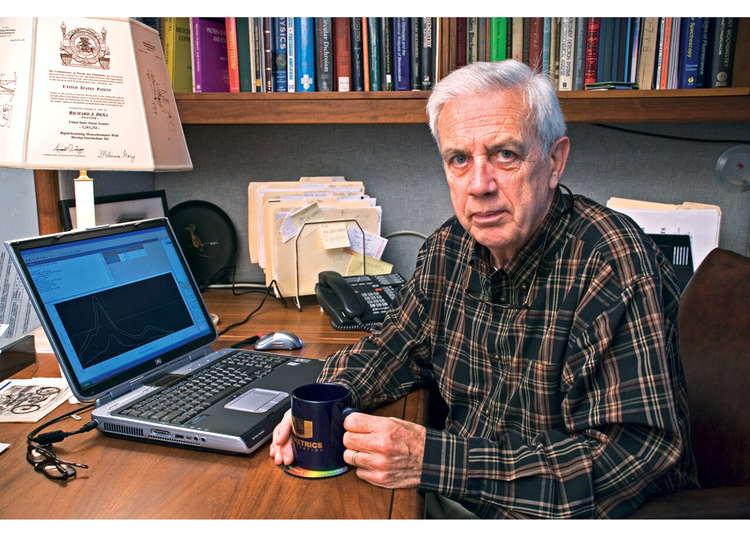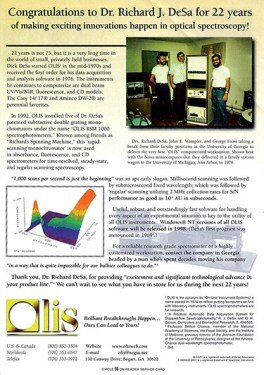What Does Uv/vis/nir Mean?
What Does Uv/vis/nir Mean?
Blog Article
Top Guidelines Of Spectrophotometers
Table of ContentsSome Known Incorrect Statements About Circularly Polarized Luminescence Uv/vis/nir for DummiesUv/vis/nir for DummiesThe Facts About Uv/vis UncoveredThe 6-Minute Rule for Uv/vis

Although spectrophotometry is most commonly used to ultraviolet, visible, and infrared radiation, modern spectrophotometers can question broad swaths of the electro-magnetic spectrum, consisting of x-ray, ultraviolet, noticeable, infrared, and/or microwave wavelengths. Spectrophotometry is a tool that depends upon the quantitative analysis of molecules depending upon just how much light is taken in by colored compounds.
The Facts About Spectrophotometers Revealed
A spectrophotometer is frequently used for the measurement of transmittance or reflectance of services, transparent or opaque solids, such as sleek glass, or gases. Although numerous biochemicals are colored, as in, they soak up noticeable light and therefore can be measured by colorimetric treatments, even colorless biochemicals can often be transformed to colored compounds suitable for chromogenic color-forming responses to yield substances ideal for colorimetric analysis.: 65 However, they can also be designed to measure the diffusivity on any of the noted light varieties that normally cover around 2002500 nm using various controls and calibrations.
An example of an experiment in which spectrophotometry is utilized is the decision of the stability constant of a service. A particular chemical response within a service may happen in a forward and reverse direction, where reactants form products and products break down into reactants. Eventually, this chemical response will reach a point of balance called a balance point.
3 Easy Facts About Spectrophotometers Described
The quantity of light that travels through the solution is indicative of the concentration of certain chemicals that do not permit light to pass through. The absorption of light is due to the interaction of light with the electronic and vibrational modes of particles. Each type of particle has a private set of energy levels associated with the makeup of its chemical bonds and nuclei and thus will take in light of particular wavelengths, or energies, resulting in distinct spectral homes.
They are extensively utilized in many markets including semiconductors, laser and optical manufacturing, printing and forensic evaluation, as well as in labs for the research study of chemical substances. Spectrophotometry is typically used in measurements of enzyme activities, decisions of protein concentrations, decisions of enzymatic kinetic constants, and measurements of ligand binding reactions.: 65 Ultimately, a spectrophotometer is able to figure out, depending on the control or calibration, what compounds are present in a target and precisely how much through estimations of observed wavelengths.
This would come as an option to the formerly produced spectrophotometers which were not able to take in the ultraviolet properly.
Not known Details About Uv/vis/nir
It would be discovered that this did not offer satisfying results, for that reason in Design B, there was a shift from more information a glass to a quartz prism which permitted much better absorbance results - circularly polarized luminescence (http://www.video-bookmark.com/bookmark/6114703/olis-clarity/). From there, Design C was born with a change to the wavelength resolution which ended up having 3 units of it produced
It irradiates the sample with polychromatic light which the sample soaks up depending upon its homes. It is transferred back by grating the photodiode array which detects the wavelength region of the spectrum. Ever since, the creation and implementation of spectrophotometry gadgets has increased tremendously and has turned into one of the most innovative instruments of our time.

Not known Details About Circularly Polarized Luminescence
Historically, spectrophotometers use a monochromator including a diffraction grating to produce the analytical spectrum. The grating can either be movable or repaired. If a single detector, such as a photomultiplier tube or photodiode is used, the grating can be scanned step-by-step (scanning spectrophotometer) so that the detector can determine the light strength at each wavelength (which will correspond to each "step").
In such systems, the grating is fixed and the intensity of each wavelength of light is determined by a various detector in the array. When making transmission measurements, the spectrophotometer quantitatively compares the portion of light that passes through a recommendation option and a test option, then digitally compares the strengths of the 2 signals and calculates the percentage of transmission of the sample compared to the recommendation requirement.

Report this page